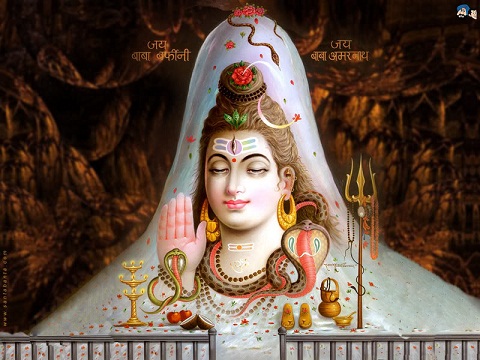From the very early morning, Shiva temples are flocked by devotees, young and old, who come to perform the traditional Shivalinga worship (puja) and hence hope for favours from the god. Devotees bathe at sunrise, preferably in the Ganga, or any other holy water source (like the Shiva Sagartank at Khajurao). This is a purificatory rite, an important part of all Hindu festivals. Wearing a clean piece of clothing after the holy bath, worshippers carry pots of water to the temple to bathe the Shivalinga. They offer prayers to the sun, Vishnu and Shiva.Women pray for the well-being of their husbands and sons. An unmarried woman prays for a husband like Shiva, who is considered to be the ideal husband. The temple reverberates with the sound of bells and shouts of "Shankerji ki Jai” meaning 'Hail Shiva'. Devotees circumambulate the linga, three or seven times, and then pour water over it. Some also pour milk.
According to the Shiva Purana, the Mahashivaratri worship must incorporate six items:
- Bathing the Shiv Linga with water, milk and honey, and Wood apple or bel leaves added to it, representing purification of the soul;
- The vermilion paste applied on the Shiv Linga after bathing it, representing virtue;
- Offering of fruits, which is conducive to longevity and gratification of desires;
- Burning incense, yielding wealth;
- The lighting of the lamp which is conducive to the attainment of knowledge;
- And betel leaves marking satisfaction with worldly pleasures.
Tripundra refers to the three horizontal stripes of holy ash applied to the forehead by worshippers of Lord Shiva. These stripes symbolise spiritual knowledge, purity and penance (spiritual practice of Yoga), so also they represent the three eyes of Lord Shiva.
Wearing a rosary made from the rudraksha seed of the rudraksha tree (said to have sprung from the tears of Lord Shiva) when worshipping Lord Shiva is ideal. A rudraksha seed is a mahogany-like color, sometimes black, and sometimes may have traces of sacred sandalwood powder, turmeric, kumkum, or holy ash if the rosary was used in worship ceremonies or anointed.



